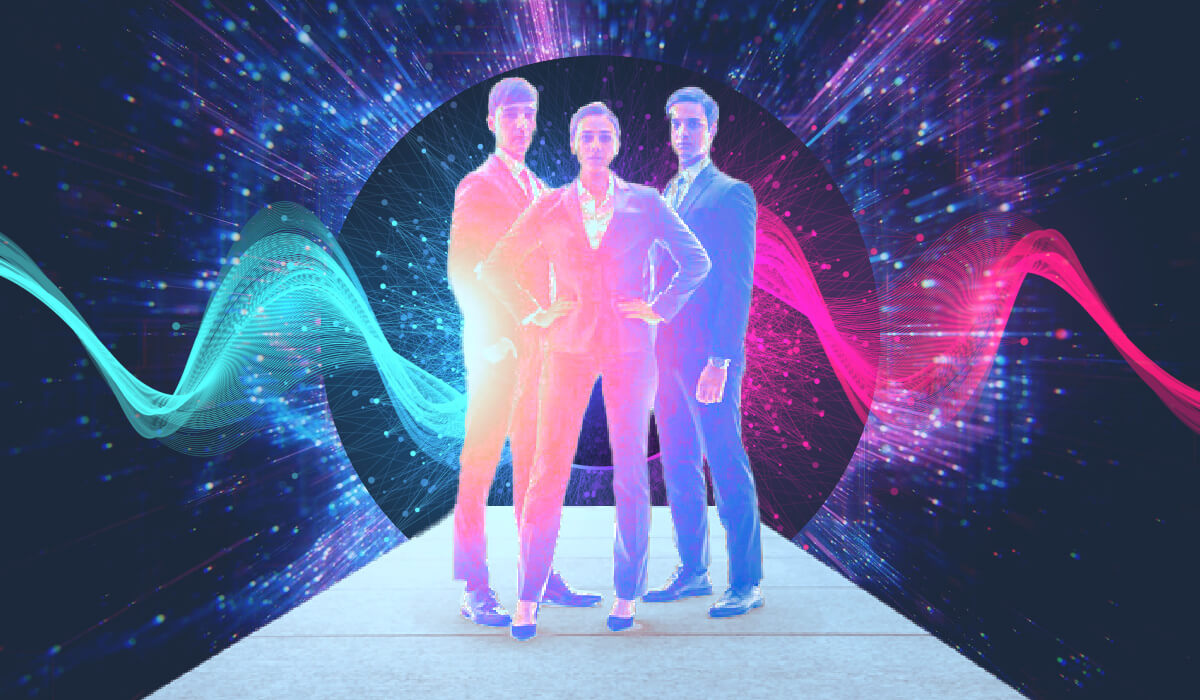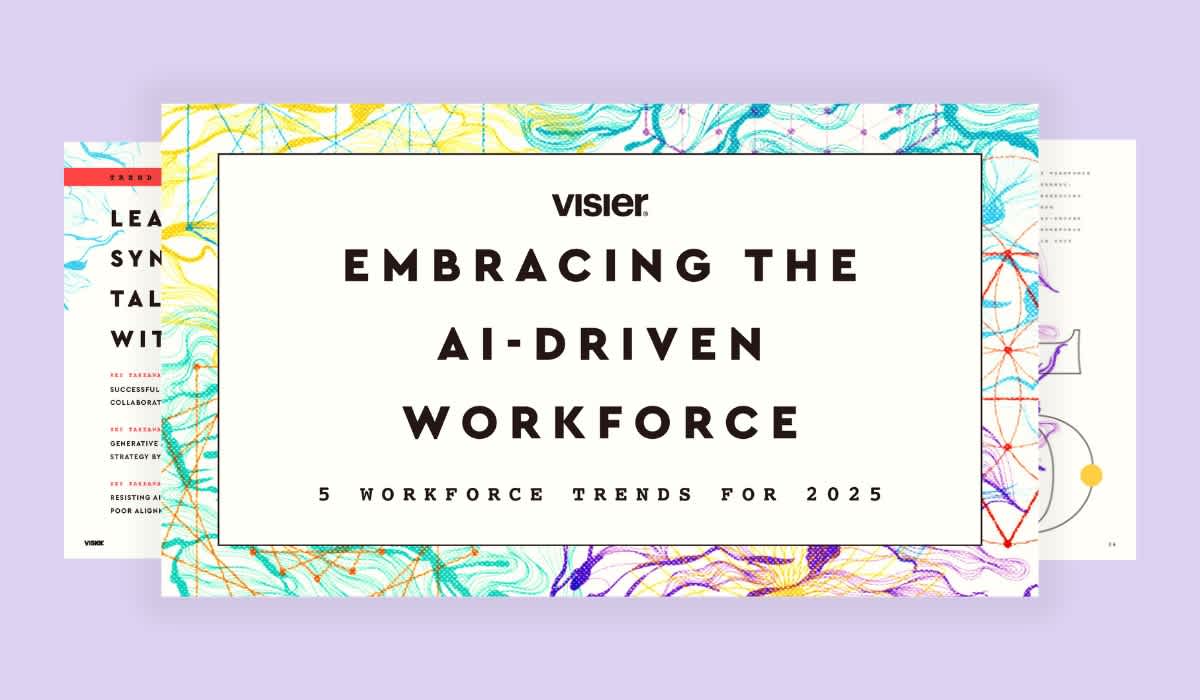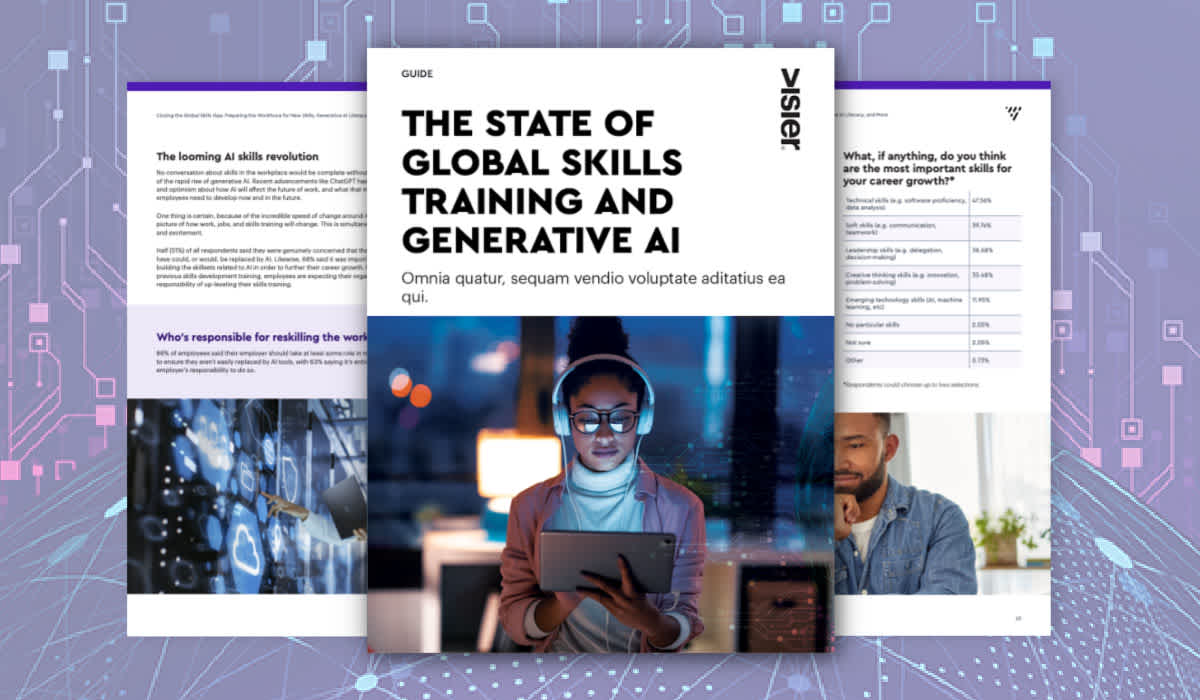How Generative AI and HR Are Shaping the Future of Work
To keep up with the future of work, HR leaders need a strategy that's agile, adaptable, and rooted in data. GenAI can help close the gap between people data and business data. Here's how.

Generative AI (GenAI) has garnered considerable attention, has been the foundation for rapid innovation, and is quickly changing how we work. Some of the technological advancements brought by GenAI are paving the way to automate new parts of time-consuming tasks like writing email templates or snippets of code, freeing up more time for employees and ultimately shifting the nature of their work.
When you consider that ChatGPT was released just shy of a year ago, these innovations are happening at warp speed. The rapid pace of change brings about some confusion and uncertainty in the bigger picture—organizations must weave in data security and privacy standards, stay vigilant about new regulations, and consider how skills and jobs will change with AI.
Some organizations are taking a proactive approach, investing in developing in-house capabilities. Others prefer to leverage external vendors and technologies to expedite the process. Meanwhile, a few organizations are taking a more cautious stance, waiting to see how the landscape evolves before making any significant moves. One thing that's clear across the board: GenAI isn't going away—in fact, employees are already embracing the change, making it critical for organizations to embrace the technology and build a strategy to use it.
Build an HR strategy that can adapt to the future of work
Organizations must future-proof their strategies for agility and adaptability. This journey starts with redefining roles and workflows, acknowledging that AI doesn't merely automate tasks—it reshapes how we work. Employees will increasingly find themselves collaborating with AI systems, allowing machines to handle routine tasks while focusing on higher-value, strategic work.
To navigate this shift, organizations must anticipate reskilling and upskilling needs. As certain job functions become automated, employees must be empowered with new skills that align with AI-augmented roles. This proactive approach to learning and development (L&D) ensures that the workforce remains relevant and agile.
However, AI's impact extends beyond tasks and skills—it touches the very culture of an organization. Fostering a culture of adaptability, continuous learning, and AI collaboration becomes paramount. Leadership plays a crucial role in driving this cultural transformation.
Strategic workforce planning emerges as a linchpin in this transformative journey. Organizations must analyze the impact of AI on job roles, skill requirements, and talent acquisition strategies. This analysis enables organizations to proactively design their workforce for future success.
But future-proofing isn't just about people—it's also about data. With AI and people analytics, organizations gain powerful insights. Encouraging data literacy among employees empowers them to harness these insights effectively. AI's support enables decision-makers to rely on data-backed recommendations for improved outcomes.
Using generative AI to close the People Impact Gap
There is this gap at the heart of business known as the People Impact Gap. The People Impact Gap represents the open space between the level of performance businesses seek and the talent and skills needed to produce those results. At the root of the People Impact Gap is disconnection. The fuel for this desired level of performance lies within an organization's raw data—both people data and business data—but organizations have long struggled to connect the two together.

Generative AI is particularly good at ingesting a question, interpreting that language, and responding with answers and specific guidance, and its ability to follow question strings makes it easy for users to ask follow-up questions in conversational language to get to the answers they seek.
Say you wanted to understand turnover at your organization. You could use generative AI to ask, "What's my turnover rate?". You'd get an answer, and you could ask the natural follow-up questions that come to mind like, "How does that compare to the rest of the company?", or "Is that higher for women or men?". This instant, conversational format closes the space between asking the question and getting an accurate, complete answer.
With a generative AI assistant like Vee, this becomes instantly easy and accessible. With Vee, you can interact with the data you have about your people and your business in a conversational way by asking questions and getting instant, accurate answers back. Vee is built on Visier's robust security model, leveraging role-based permissions to show the right answers to the right users when they need them.
Key takeaways
In the end, the journey of future-proofing for agility isn't a destination but a dynamic process. It involves reshaping roles, fostering adaptability, strategic workforce planning, data-driven decision-making, ethical AI governance, collaboration, and ongoing agility. By embracing these elements, organizations can set sail confidently into the AI-augmented world, equipped to lead the way in shaping the future of work.

On the Outsmart blog, we write about workforce-related topics like what makes a good manager, how to reduce employee turnover, and reskilling employees. We also report on trending topics like ESG and EU CSRD requirements and preparing for a recession, and advise on HR best practices like how to create a strategic compensation strategy, metrics every CHRO should track, and connecting people data to business data. But if you really want to know the bread and butter of Visier, read our post about the benefits of people analytics.


